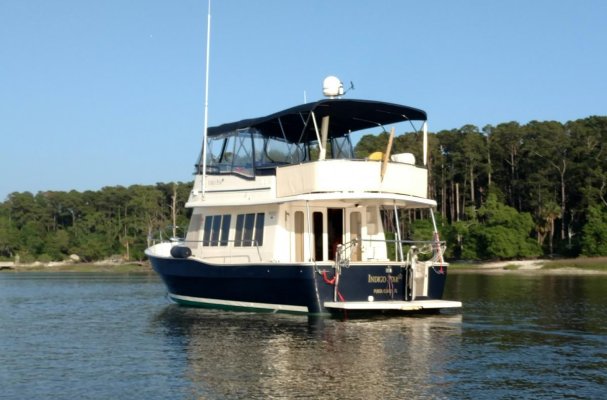jefndeb
Guru
Hello,
The PO installed two of the Duracell Model SL18DA batteries in Feb of 2019 for the house and one for the starting battery.
However this past weekend on the hook, only showing about 10-12 amps DC load, (running the fridge) via the inverter, I was at 80% withing 5 hours.....didn't seem to add up right.
The house bank is also used for both the bow & stern thrusters so I guess thats why he picked these more-or-less starting batteries.
I sorta expect to run the genset an hour in the morning for coffee & maybe microwave and then one more time in the evening to run the AC to dehumidify the cabin etc and top off the house bank, but I didnt expect the batteries go down that fast..
Reading the spec of these batteries they look like Sams type Truck cranking batteries....
I cant even find an Amp Hour rating for these??
Not sure if I should just deal with it as is....
The PO installed two of the Duracell Model SL18DA batteries in Feb of 2019 for the house and one for the starting battery.
However this past weekend on the hook, only showing about 10-12 amps DC load, (running the fridge) via the inverter, I was at 80% withing 5 hours.....didn't seem to add up right.
The house bank is also used for both the bow & stern thrusters so I guess thats why he picked these more-or-less starting batteries.
I sorta expect to run the genset an hour in the morning for coffee & maybe microwave and then one more time in the evening to run the AC to dehumidify the cabin etc and top off the house bank, but I didnt expect the batteries go down that fast..
Reading the spec of these batteries they look like Sams type Truck cranking batteries....
I cant even find an Amp Hour rating for these??
Not sure if I should just deal with it as is....



